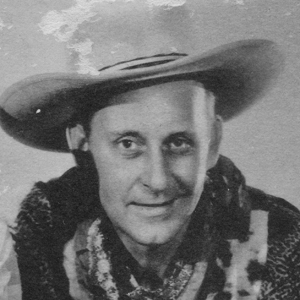With a continuous studio career from 1924 to 1956, Carson J. Robison is
probably the most recorded singer-songwriter in country music history. He was
also one of the first full-time country writers.
Robison was raised on a farm in Kansas and was self-taught on guitar, tenor
banjo, harmonica and ukulele. He also learned the unique skill of two-tone
whistling, sounding like two people whistling in harmony.
After working as a cowboy, oilfield worker, soldier and railroad dispatcher, he
began concentrating on music when he was 30 years old. He was discovered by
recording star Wendell Hall and brought to New York in 1924. For the next
several years, Robison was in demand as a session musician, playing and
whistling on the records of Gene Austin, Hoagy Carmichael and others.
From 1924 to 1928, Robison provided country star Vernon Dalhart with
instrumental backing and songs. He wrote many of Dalhart's big "event" songs,
commemorating fires, train wrecks, earthquakes and the like. He also became
Dalhart's partner on duets and in trio recordings with fiddler Adelyne Hood.
Despite their success, the two men had a less than cordial relationship.
Dalhart reportedly treated Robison like a sideman and demanded one-third of his
songwriting royalties. When this escalated to one-half of Robison's royalties,
the songwriter severed the partnership.
Robison immediately teamed up for duets with Frank Luther, who could sing
almost exactly like Dalhart. They had an instant hit with "Barnacle Bill the
Sailor" and followed it with four sequels. With Luther's wife, fiddler Zora
Layman, they also aped Dalhart's trio records. The Luther-Robison partnership
lasted until they parted amicably in 1932.
Next, Robison reinvented himself as a cowboy singer. He traveled with his group
to Great Britain and Ireland in 1932, 1936 and 1939, becoming the first act to
take country music overseas. Stateside, he starred in a string of national
radio series for CBS and NBC throughout the 1930s. During this phase of his
career Robison wrote such cowboy classics as "Carry Me Back to the Lone
Prairie."
When World War II broke out, Robison shifted musical styles again. He created
topical songs about the conflict that became enormously popular. He scored the
biggest hit of his career with the humorous "Life Gets Tee-Jus, Don't It" in
1948. Ever alert to changing tastes, he wrote and recorded "Rockin' and Rollin'
with Grandma" in 1956, the year before his death.
